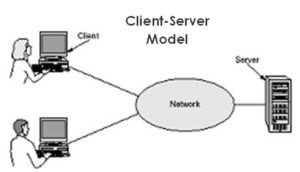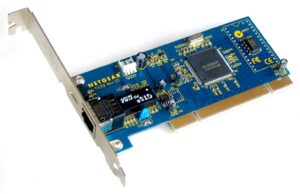Introduction
Why have networks?
Advantages of networks
- Resource sharing
- Communication
Disadvantages of networks
- Cost
- Security
- Complexity

Client / Server Model
Client / Server Model
Servers
The job of a server is to provide services to the clients on the network.
The services that a server might provide include:
- User Authentication
- File Storage
- Internet Access
- Hardware sharing ( printers, scanners,etc)
Client
The job of the client is to provide a workstation for networks users to use.
When a user logs in to a client they are usually provided with access to:
- a private files storage area
- a shared file storage
- the internet and the organisation’s intranet.
- Network hardware resources, such as printers and scanners.
NICs
Network Interface Controller / Card
All servers and clients need to have a network interface card to access the network.
Network interface cards a machine to connect to a network using an Ethernet cable.
Switch / Hub
Switches and hubs
With a small network you might get away with connecting all of your clients directly to the server, but larger networks require hubs/switches in between to control the flow of data within the network.
Routers
Router
The job of a router is to connect two different types of network together. Within most organisations a router is used to connect the internal Local Area Network to the Internet.
Home networking
You home broadband often comes with what the broadband companies call a ‘router’, these are actually composite devices that combine:
- A Router
- A Firewall
- A Wireless Network Access Point
- A Wired Network Switch


